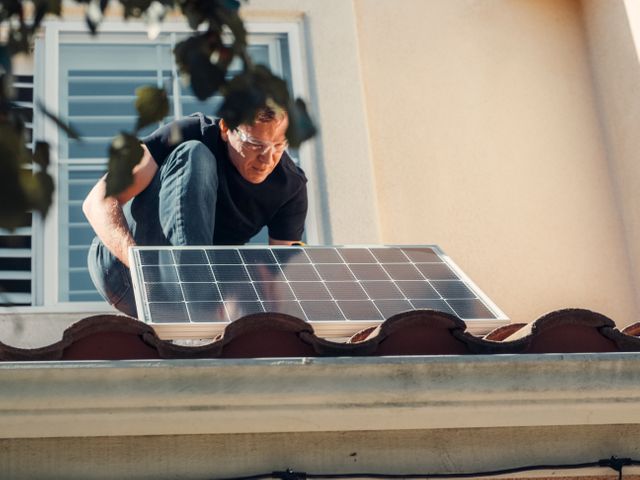
Energy is currently a constant on the tip of our tongues. With a cost-of-living crisis and the hottest summer to date, we need to find new sustainable solutions. This has been an ongoing argument for almost a decade but people are now seeing the severity of the issue.
20% of the UK’s energy is renewable and that is meant to rise to meet EU targets throughout the decade. An article on Industrial News titled “What should homeowners consider when switching to renewable energy?” seemed the perfect place to start my research on the future of energy manufacturing for the public.
Green energy has become more feasible for people due to tax breaks and technological advances. Renewable energy sources are accessible and efficient. Strict planning is, however, required to implement renewable technology into the home successfully.
Solar photovoltaics (PV) is the most well-known energy source – it “captures the sun’s energy and converts it into electricity that you can use in your home.” PV is created with layers of semi-conducting material, when the sun shines the cells then begin to react and produce electricity. The amount of energy produced depends on the amount of light that day.
PV is the fastest growing electricity source as the technology becomes increasingly affordable with costs falling by 82% over the past decade.
PV is an easy route for homeowners to choose as rooftop panels are common and every home experiences sunlight, although some homes do get more direct sunlight than others making them more efficient solar candidates.
Solar energy makes up 6.8% of the UK’s power created by household solar and solar farms. A limitation of solar energy is the amount of space a solar panel uses per the amount of energy it makes. As the UK isn’t always sunny blue skies, there are more limitations on the amount of energy will get from a PV in a year.

Wind power is the biggest green energy producer in the US. The best way of producing a mass of energy in an empty space is to create a wind farm, however, smaller alternatives are becoming more popular. Homeowners can now buy their own small turbines which over the years are becoming smaller and less invasive as technology develops.
The wind is potentially less accessible in the UK, however; the UK’s average wind speed is 7.9 knots, with a wind turbine producing minimal power at between 5.94 and 7.56 knots. For a wind turbine to produce the maximum amount of energy the wind needs to be blowing at around 32 knots. This means that perhaps wind turbines aren’t the most efficient form of energy for lots of households in the UK, along with rules regarding vertical height restrictions making it more inconvenient than other means.

Geothermal power is uncommon commercially in the UK, with the UK having no deep geothermal plants. Geothermal energy works by “using the earth’s constant underground temperature to heat and cool homes” with no fossil fuel energy.
Geothermal is much like a fridge which uses a system of coils to move refrigerant thought the house either warming or cooling the room. However, rather than the refrigerant, geothermal power uses ground temperatures and air to move the fluid.
Geothermal won’t power the entire house as wind and solar do but it will power and regulate heating and cooling which are two of the biggest energy consumers in homes. By switching to these alternatives homeowners will radically reduce their carbon footprint.

Renewable energy doesn’t just apply to the homeowner, businesses can also use renewable energy to keep down costs and reduce their carbon footprint. The easiest way for businesses to go ahead with this switch is for them to switch to a green energy provider. They have a few more options as the energy is being produced away from the site.
Onshore wind is the UK’s largest renewable energy source, generating “13.8% of total electricity generation in the UK, it also beats the combined generation of coal, oil, and others by 6.5%.” Onshore wind is around 30-45% efficient, increasing to 50% during peak wind times. This efficiency is based on the principle that if a turbine were 100% efficient the wind would drop and no longer be there once going through the turbine.

As the world is beginning to shift into a place of reusable energy, all of us need to consider how we can utilise it in both our personal lives and within the workplace. The production of power could be expanded to more localised areas with each of us becoming a little more self-sufficient. This could, in turn, reduce business expenses and promote a more positive, ethical working environment.
The advances in these technologies within the UK also promote manufacturing possibilities that we will all benefit from once we begin to become less reliant on oil and heavy emission fuels.
Onshore wind is the UK’s largest renewable energy source, generating “13.8% of total electricity generation in the UK, it also beats the combined generation of coal, oil, and others by 6.5%.”